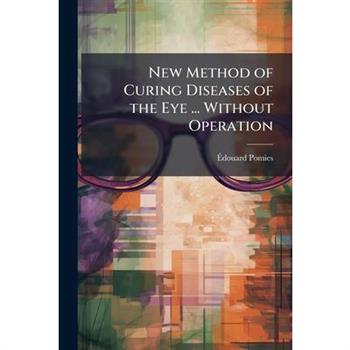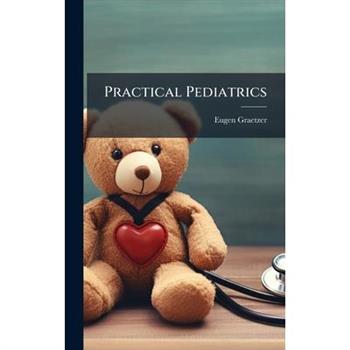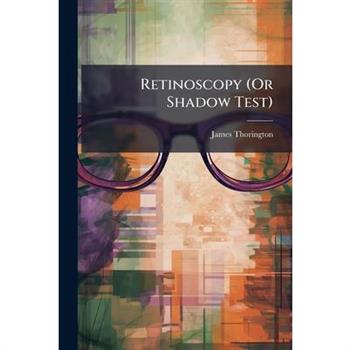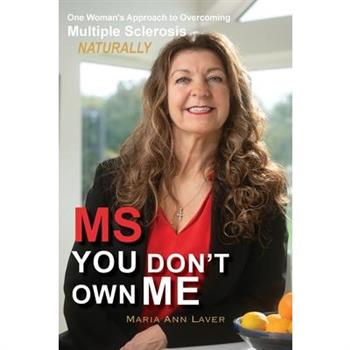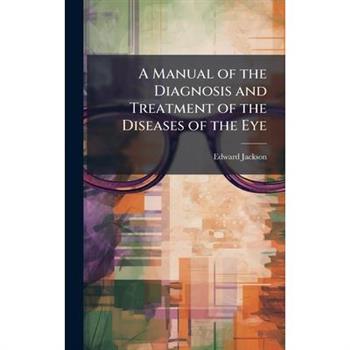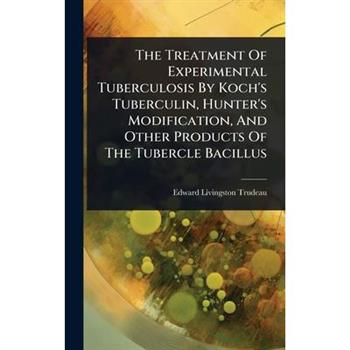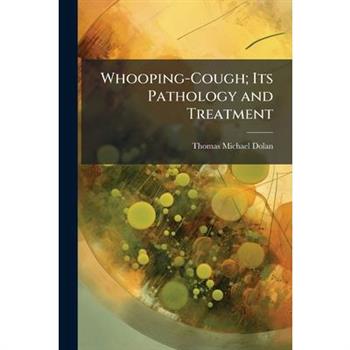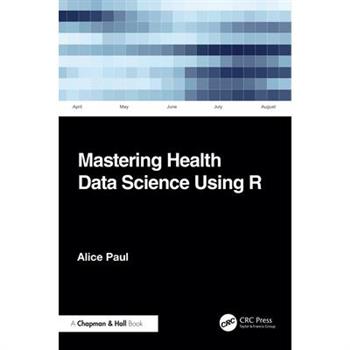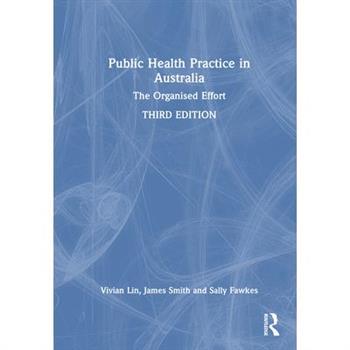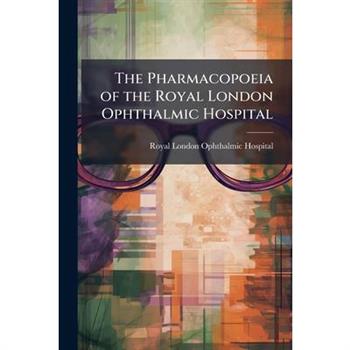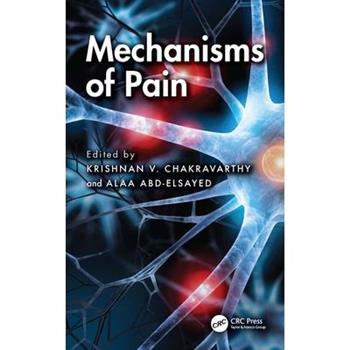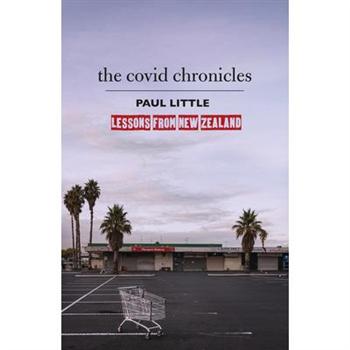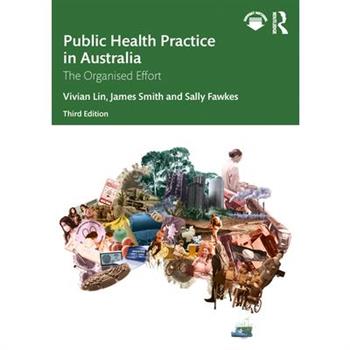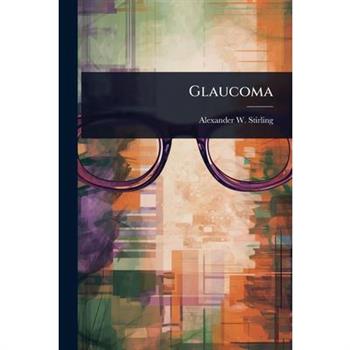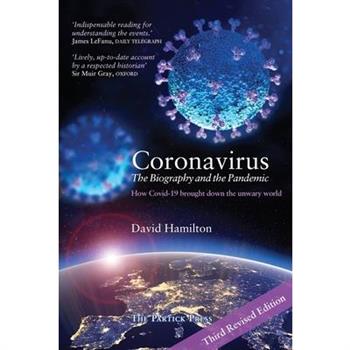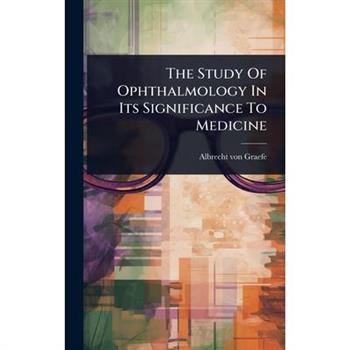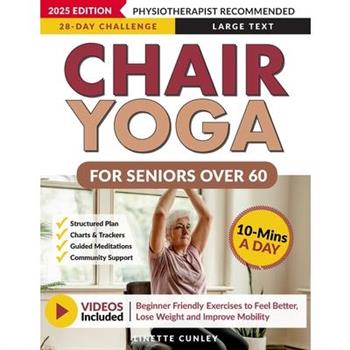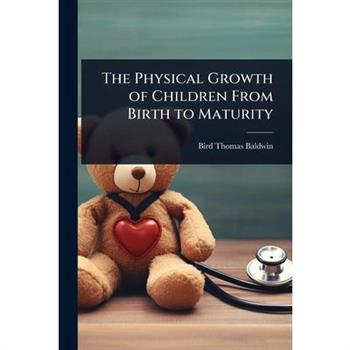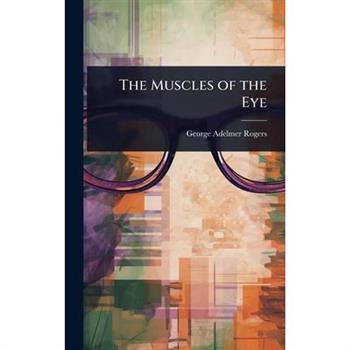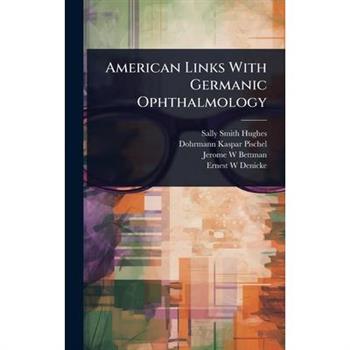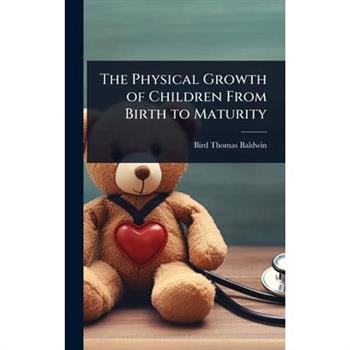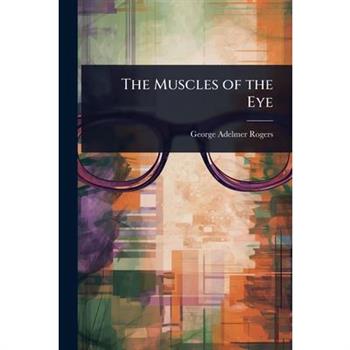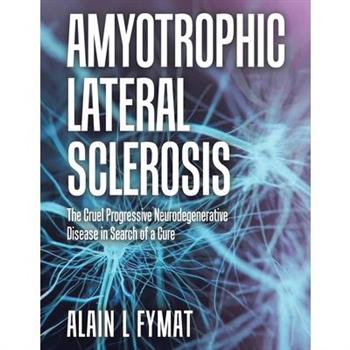A Manual of the Diagnosis and Treatment of the Diseases of the Eye
"A Manual of the Diagnosis and Treatment of the Diseases of the Eye" by Edward Jackson, originally published in 1907, offers a comprehensive guide to understanding and managing various eye conditions. This meticulously detailed manual provides insights into diagnostic techniques and treatment methods prevalent at the turn of the century. With chapters covering a wide range of ocular ailments, this book serves as an invaluable resource for those interested in the historical practices of ophthalmology. Its enduring value lies in its detailed descriptions and systematic approach to eye care, making it an essential addition to the libraries of medical historians, students, and practitioners alike.This work has been selected by scholars as being culturally important, and is part of the knowledge base of civilization as we know it. This work was reproduced from the original artifact, and remains as true to the original work as possible. Therefore, you will see the original copyright references, library stamps (as most of these works have been housed in our most important libraries around the world), and other notations in the work.This work is in the public domain in the United States of America, and possibly other nations. Within the United States, you may freely copy and distribute this work, as no entity (individual or corporate) has a copyright on the body of the work.As a reproduction of a historical artifact, this work may contain missing or blurred pages, poor pictures, errant marks, etc. Scholars believe, and we concur, that this work is important enough to be preserved, reproduced, and made generally available to the public. We appreciate your support of the preservation process, and thank you for being an important part of keeping this knowledge alive and relevant.
Practical Pediatrics
"Practical Pediatrics: A Manual of the Medical and Surgical Diseases of Infancy and Childhood," by Eugen Graetzer, offers a comprehensive guide to the medical and surgical ailments affecting young patients. Originally published in 1905, this book provides detailed insights into the diagnosis and treatment of various conditions prevalent during infancy and childhood. Covering a wide range of topics, from common illnesses to more complex surgical interventions, this manual serves as a valuable resource for medical professionals seeking to enhance their knowledge and skills in pediatric care. Though reflecting the medical practices of its time, "Practical Pediatrics" remains relevant for its historical context and the foundational knowledge it imparts regarding the health and well-being of children.This work has been selected by scholars as being culturally important, and is part of the knowledge base of civilization as we know it. This work was reproduced from the original artifact, and remains as true to the original work as possible. Therefore, you will see the original copyright references, library stamps (as most of these works have been housed in our most important libraries around the world), and other notations in the work.This work is in the public domain in the United States of America, and possibly other nations. Within the United States, you may freely copy and distribute this work, as no entity (individual or corporate) has a copyright on the body of the work.As a reproduction of a historical artifact, this work may contain missing or blurred pages, poor pictures, errant marks, etc. Scholars believe, and we concur, that this work is important enough to be preserved, reproduced, and made generally available to the public. We appreciate your support of the preservation process, and thank you for being an important part of keeping this knowledge alive and relevant.
On the Pathology and Treatment of Gonorrhoea and Spermatorrhoea
"On the Pathology and Treatment of Gonorrhoea and Spermatorrhoea" by John Laws Milton is a detailed exploration of these medical conditions as understood in the late 19th century. This historical medical text offers insights into the diagnostic methods, treatments, and prevailing medical theories of the time. Milton's work provides a valuable window into the history of medicine and the evolution of our understanding of sexually transmitted diseases and urological ailments. It remains a significant resource for those interested in the historical context of medical practices and the development of modern medical science.This work has been selected by scholars as being culturally important, and is part of the knowledge base of civilization as we know it. This work was reproduced from the original artifact, and remains as true to the original work as possible. Therefore, you will see the original copyright references, library stamps (as most of these works have been housed in our most important libraries around the world), and other notations in the work.This work is in the public domain in the United States of America, and possibly other nations. Within the United States, you may freely copy and distribute this work, as no entity (individual or corporate) has a copyright on the body of the work.As a reproduction of a historical artifact, this work may contain missing or blurred pages, poor pictures, errant marks, etc. Scholars believe, and we concur, that this work is important enough to be preserved, reproduced, and made generally available to the public. We appreciate your support of the preservation process, and thank you for being an important part of keeping this knowledge alive and relevant.
Sexual Debility in Man
"Sexual Debility in Man" by Frederic Russell Sturgis, originally published in 1900, offers a detailed exploration into the medical understanding of male sexual health at the turn of the century. This historical text provides insights into the diagnosis and treatment of conditions such as impotence and other genito-urinary diseases. Sturgis's work reflects the medical practices and theories prevalent during his time, making it a valuable resource for those interested in the history of medicine and the evolution of sexual health treatments. The book provides a glimpse into the challenges and approaches used by physicians in addressing men's health concerns during a period of significant medical advancement.This work has been selected by scholars as being culturally important, and is part of the knowledge base of civilization as we know it. This work was reproduced from the original artifact, and remains as true to the original work as possible. Therefore, you will see the original copyright references, library stamps (as most of these works have been housed in our most important libraries around the world), and other notations in the work.This work is in the public domain in the United States of America, and possibly other nations. Within the United States, you may freely copy and distribute this work, as no entity (individual or corporate) has a copyright on the body of the work.As a reproduction of a historical artifact, this work may contain missing or blurred pages, poor pictures, errant marks, etc. Scholars believe, and we concur, that this work is important enough to be preserved, reproduced, and made generally available to the public. We appreciate your support of the preservation process, and thank you for being an important part of keeping this knowledge alive and relevant.
Sexual Debility in Man
"Sexual Debility in Man" by Frederic Russell Sturgis, originally published in 1900, offers a detailed exploration into the medical understanding of male sexual health at the turn of the century. This historical text provides insights into the diagnosis and treatment of conditions such as impotence and other genito-urinary diseases. Sturgis's work reflects the medical practices and theories prevalent during his time, making it a valuable resource for those interested in the history of medicine and the evolution of sexual health treatments. The book provides a glimpse into the challenges and approaches used by physicians in addressing men's health concerns during a period of significant medical advancement.This work has been selected by scholars as being culturally important, and is part of the knowledge base of civilization as we know it. This work was reproduced from the original artifact, and remains as true to the original work as possible. Therefore, you will see the original copyright references, library stamps (as most of these works have been housed in our most important libraries around the world), and other notations in the work.This work is in the public domain in the United States of America, and possibly other nations. Within the United States, you may freely copy and distribute this work, as no entity (individual or corporate) has a copyright on the body of the work.As a reproduction of a historical artifact, this work may contain missing or blurred pages, poor pictures, errant marks, etc. Scholars believe, and we concur, that this work is important enough to be preserved, reproduced, and made generally available to the public. We appreciate your support of the preservation process, and thank you for being an important part of keeping this knowledge alive and relevant.
New Method of Curing Diseases of the Eye ... Without Operation
"New Method of Curing Diseases of the Eye ... Without Operation" presents a unique approach to treating various eye ailments. Written by ?douard Pomies, this historical text explores methods of curing eye diseases without resorting to surgical intervention. The book delves into alternative treatments and provides insights into the state of ophthalmology during the time it was written. It is a valuable resource for those interested in the history of medicine, particularly the evolution of eye care practices. Discover the techniques and philosophies that challenged conventional medical approaches and offered new hope for patients suffering from eye-related conditions.This work has been selected by scholars as being culturally important, and is part of the knowledge base of civilization as we know it. This work was reproduced from the original artifact, and remains as true to the original work as possible. Therefore, you will see the original copyright references, library stamps (as most of these works have been housed in our most important libraries around the world), and other notations in the work.This work is in the public domain in the United States of America, and possibly other nations. Within the United States, you may freely copy and distribute this work, as no entity (individual or corporate) has a copyright on the body of the work.As a reproduction of a historical artifact, this work may contain missing or blurred pages, poor pictures, errant marks, etc. Scholars believe, and we concur, that this work is important enough to be preserved, reproduced, and made generally available to the public. We appreciate your support of the preservation process, and thank you for being an important part of keeping this knowledge alive and relevant.
Practical Pediatrics
"Practical Pediatrics: A Manual of the Medical and Surgical Diseases of Infancy and Childhood," by Eugen Graetzer, offers a comprehensive guide to the medical and surgical ailments affecting young patients. Originally published in 1905, this book provides detailed insights into the diagnosis and treatment of various conditions prevalent during infancy and childhood. Covering a wide range of topics, from common illnesses to more complex surgical interventions, this manual serves as a valuable resource for medical professionals seeking to enhance their knowledge and skills in pediatric care. Though reflecting the medical practices of its time, "Practical Pediatrics" remains relevant for its historical context and the foundational knowledge it imparts regarding the health and well-being of children.This work has been selected by scholars as being culturally important, and is part of the knowledge base of civilization as we know it. This work was reproduced from the original artifact, and remains as true to the original work as possible. Therefore, you will see the original copyright references, library stamps (as most of these works have been housed in our most important libraries around the world), and other notations in the work.This work is in the public domain in the United States of America, and possibly other nations. Within the United States, you may freely copy and distribute this work, as no entity (individual or corporate) has a copyright on the body of the work.As a reproduction of a historical artifact, this work may contain missing or blurred pages, poor pictures, errant marks, etc. Scholars believe, and we concur, that this work is important enough to be preserved, reproduced, and made generally available to the public. We appreciate your support of the preservation process, and thank you for being an important part of keeping this knowledge alive and relevant.
Retinoscopy (Or Shadow Test)
Retinoscopy (Or Shadow Test), by James Thorington, is a detailed guide to performing retinoscopy, also known as the shadow test, for determining refractive errors of the eye. This classic text, originally published in 1911, focuses on the technique as performed at a one-meter distance using a plane mirror. Thorington provides meticulous instructions and explanations, making it an invaluable resource for students and practitioners of ophthalmology and optometry. The book covers essential principles, instrumentation, and practical methods, ensuring a comprehensive understanding of this diagnostic procedure. With clear diagrams and thorough explanations, Retinoscopy remains a relevant reference for anyone interested in the history and practice of vision care.This work has been selected by scholars as being culturally important, and is part of the knowledge base of civilization as we know it. This work was reproduced from the original artifact, and remains as true to the original work as possible. Therefore, you will see the original copyright references, library stamps (as most of these works have been housed in our most important libraries around the world), and other notations in the work.This work is in the public domain in the United States of America, and possibly other nations. Within the United States, you may freely copy and distribute this work, as no entity (individual or corporate) has a copyright on the body of the work.As a reproduction of a historical artifact, this work may contain missing or blurred pages, poor pictures, errant marks, etc. Scholars believe, and we concur, that this work is important enough to be preserved, reproduced, and made generally available to the public. We appreciate your support of the preservation process, and thank you for being an important part of keeping this knowledge alive and relevant.
Retinoscopy (Or Shadow Test)
Retinoscopy (Or Shadow Test), by James Thorington, is a detailed guide to performing retinoscopy, also known as the shadow test, for determining refractive errors of the eye. This classic text, originally published in 1911, focuses on the technique as performed at a one-meter distance using a plane mirror. Thorington provides meticulous instructions and explanations, making it an invaluable resource for students and practitioners of ophthalmology and optometry. The book covers essential principles, instrumentation, and practical methods, ensuring a comprehensive understanding of this diagnostic procedure. With clear diagrams and thorough explanations, Retinoscopy remains a relevant reference for anyone interested in the history and practice of vision care.This work has been selected by scholars as being culturally important, and is part of the knowledge base of civilization as we know it. This work was reproduced from the original artifact, and remains as true to the original work as possible. Therefore, you will see the original copyright references, library stamps (as most of these works have been housed in our most important libraries around the world), and other notations in the work.This work is in the public domain in the United States of America, and possibly other nations. Within the United States, you may freely copy and distribute this work, as no entity (individual or corporate) has a copyright on the body of the work.As a reproduction of a historical artifact, this work may contain missing or blurred pages, poor pictures, errant marks, etc. Scholars believe, and we concur, that this work is important enough to be preserved, reproduced, and made generally available to the public. We appreciate your support of the preservation process, and thank you for being an important part of keeping this knowledge alive and relevant.
MS You Don’t Own Me
MS You Don't Own me is more than a title - it's a declaration. In this bold, blisteringly honest book, MS charts the journey from silence to strength, ownership to liberation. Whether you've felt boxed in by expectations, burned by betrayal, or underestimated by the world, these pages are your rallying cry to rise.With raw truth, wisdom, and a no-holds-barred voice, MS challenges the stories we're told - and the ones we tell ourselves.This is not a story about rebellion for the sake of rebellion. It's about reclaiming power, setting boundaries, and redefining what it means to truly be free.Chronic illness doesn't just affect the body - it tests your identity, your freedom, your sense of self, in her bold and soul-stirring new book, MS You Don't Own me, Maria Ann Laver offers a gripping, no-holds-barred look at life with Multiple Sclerosis (MS) - and what it means to reclaim your life on your own terms.Written for people with MS and those who care for them, MS You Don't Own Me breaks the silence around the emotional and mental toll of chronic illness. With fierce honesty, wit, and compassion, the author addresses everything from invisible symptoms to medical gaslighting, burnout, and the quiet power of resilience."This isn't just a memoir - it's a movement," says Maria Ann Laver. "MS doesn't own me, and I want every reader to know it doesn't own them either.Whether you're newly diagnosed, deep in the fight, or walking alongside someone who is, this book is a rallying cry to rise, reclaim, and roar.MS You Don't Own Me is a powerful memoir-meets-manifesto for anyone living with Multiple sclerosis - or loving someone who is.When your body becomes a background, your spirit has to rise.In this raw, and empowering, and deeply human book, Maria Ann Laver shares the untold truths of living with MS: the fear, the anger, the doubt, and ultimately, the fire. Through personal stories, hard won wisdom, and moments of laugh-out-loud defiance, this book is a declaration of freedom from the disease and from the expectations of others.Living with MS means constantly being underestimated by others and sometimes even yourself. This book is for every MS warrior who's ready to reclaim their voice. It's for the caregivers who fight quietly alongside. It's for the ones who refuse to let a diagnosis define their destiny.MS You Don't Own Me by Maria Ann Laver is raw, real, and radically empowering.This is for: People with MS who feel unseen, unheard or overwhelmed.Caregivers who want to better understand what their loved one is going through.Anyone being told how to suffer quietly.
Vaccine Hesitancy Curriculum
Vaccination is considered one of humanity's most transformative medical breakthroughs, with its origins tracing back to Edward Jenner's groundbreaking smallpox vaccine in the late 18th century. Though early skepticism of vaccines was formidable, rigorous scientific investigation and countless documented successes established vaccination as a cornerstone of modern medicine. For generations, vaccination was considered one of the surest ways to prevent death and suffering from infectious diseases, fundamentally reshaping global public health outcomes. However, advances in social networking and the influence of an anti-vaccination movement have reignited vaccine hesitancy on a scale not seen since the pre-modern era. Empowering healthcare providers with the skills to engage in meaningful dialogue with patients and the community about vaccines is paramount to addressing vaccine hesitancy and rebuilding public trust in vaccination programs. This comprehensive book first lays a foundation for understanding vaccine hesitancy by exploring the historical sources of mistrust in vaccines and science. Subsequent chapters highlight evidence-based approaches to cultivate communication skills and foster meaningful dialogue in patient interactions, while emphasizing empathetic practice and self-reflection in health professions trainees. Beyond theoretical foundations, it provides practical tools and strategies for addressing the most challenging aspects of vaccine communication. When these communication principles are thoughtfully applied in clinical settings, they become powerful tools for combating misinformation, dismantling deeply held misconceptions, and nurturing patient trust.
A Manual of the Diagnosis and Treatment of the Diseases of the Eye
"A Manual of the Diagnosis and Treatment of the Diseases of the Eye" by Edward Jackson, originally published in 1907, offers a comprehensive guide to understanding and managing various eye conditions. This meticulously detailed manual provides insights into diagnostic techniques and treatment methods prevalent at the turn of the century. With chapters covering a wide range of ocular ailments, this book serves as an invaluable resource for those interested in the historical practices of ophthalmology. Its enduring value lies in its detailed descriptions and systematic approach to eye care, making it an essential addition to the libraries of medical historians, students, and practitioners alike.This work has been selected by scholars as being culturally important, and is part of the knowledge base of civilization as we know it. This work was reproduced from the original artifact, and remains as true to the original work as possible. Therefore, you will see the original copyright references, library stamps (as most of these works have been housed in our most important libraries around the world), and other notations in the work.This work is in the public domain in the United States of America, and possibly other nations. Within the United States, you may freely copy and distribute this work, as no entity (individual or corporate) has a copyright on the body of the work.As a reproduction of a historical artifact, this work may contain missing or blurred pages, poor pictures, errant marks, etc. Scholars believe, and we concur, that this work is important enough to be preserved, reproduced, and made generally available to the public. We appreciate your support of the preservation process, and thank you for being an important part of keeping this knowledge alive and relevant.
The Treatment Of Experimental Tuberculosis By Koch’s Tuberculin, Hunter’s Modification, And Other Products Of The Tubercle Bacillus
"The Treatment Of Experimental Tuberculosis By Koch's Tuberculin, Hunter's Modification, And Other Products Of The Tubercle Bacillus" explores early 20th-century approaches to treating tuberculosis through experimental methods. Authored by Edward Livingston Trudeau, the book delves into the application of Koch's tuberculin and Hunter's modification, alongside other substances derived from the tubercle bacillus, in experimental settings. This historical medical text offers insights into the pioneering efforts to combat tuberculosis before the advent of modern antibiotics. It provides valuable information for those interested in the history of medicine and the evolution of tuberculosis treatment.This work has been selected by scholars as being culturally important, and is part of the knowledge base of civilization as we know it. This work was reproduced from the original artifact, and remains as true to the original work as possible. Therefore, you will see the original copyright references, library stamps (as most of these works have been housed in our most important libraries around the world), and other notations in the work.This work is in the public domain in the United States of America, and possibly other nations. Within the United States, you may freely copy and distribute this work, as no entity (individual or corporate) has a copyright on the body of the work.As a reproduction of a historical artifact, this work may contain missing or blurred pages, poor pictures, errant marks, etc. Scholars believe, and we concur, that this work is important enough to be preserved, reproduced, and made generally available to the public. We appreciate your support of the preservation process, and thank you for being an important part of keeping this knowledge alive and relevant.
The Treatment Of Experimental Tuberculosis By Koch’s Tuberculin, Hunter’s Modification, And Other Products Of The Tubercle Bacillus
"The Treatment Of Experimental Tuberculosis By Koch's Tuberculin, Hunter's Modification, And Other Products Of The Tubercle Bacillus" explores early 20th-century approaches to treating tuberculosis through experimental methods. Authored by Edward Livingston Trudeau, the book delves into the application of Koch's tuberculin and Hunter's modification, alongside other substances derived from the tubercle bacillus, in experimental settings. This historical medical text offers insights into the pioneering efforts to combat tuberculosis before the advent of modern antibiotics. It provides valuable information for those interested in the history of medicine and the evolution of tuberculosis treatment.This work has been selected by scholars as being culturally important, and is part of the knowledge base of civilization as we know it. This work was reproduced from the original artifact, and remains as true to the original work as possible. Therefore, you will see the original copyright references, library stamps (as most of these works have been housed in our most important libraries around the world), and other notations in the work.This work is in the public domain in the United States of America, and possibly other nations. Within the United States, you may freely copy and distribute this work, as no entity (individual or corporate) has a copyright on the body of the work.As a reproduction of a historical artifact, this work may contain missing or blurred pages, poor pictures, errant marks, etc. Scholars believe, and we concur, that this work is important enough to be preserved, reproduced, and made generally available to the public. We appreciate your support of the preservation process, and thank you for being an important part of keeping this knowledge alive and relevant.
Whooping-Cough; Its Pathology and Treatment
Whooping-Cough; Its Pathology and Treatment, by Thomas Michael Dolan, offers a detailed examination of pertussis as understood in the late 19th century. This historical medical text provides insights into the pathology, diagnosis, and treatment of whooping cough during a period when medical understanding and therapeutic approaches were significantly different from modern practices.Dolan's work covers various aspects of the disease, including its etiology, clinical manifestations, and potential complications. The book presents a comprehensive overview of the then-current treatment options, reflecting the medical standards and available resources of the time. This volume is a valuable resource for historians of medicine, public health researchers, and anyone interested in the evolution of medical knowledge and the historical management of infectious diseases.This work has been selected by scholars as being culturally important, and is part of the knowledge base of civilization as we know it. This work was reproduced from the original artifact, and remains as true to the original work as possible. Therefore, you will see the original copyright references, library stamps (as most of these works have been housed in our most important libraries around the world), and other notations in the work.This work is in the public domain in the United States of America, and possibly other nations. Within the United States, you may freely copy and distribute this work, as no entity (individual or corporate) has a copyright on the body of the work.As a reproduction of a historical artifact, this work may contain missing or blurred pages, poor pictures, errant marks, etc. Scholars believe, and we concur, that this work is important enough to be preserved, reproduced, and made generally available to the public. We appreciate your support of the preservation process, and thank you for being an important part of keeping this knowledge alive and relevant.
Mastering Health Data Science Using R
This book provides a practical, application-driven guide to using R for public health and health data science, accessible to both beginners and those with some coding experience. Each module starts with data as the driver of analysis before introducing and breaking down the programming concepts needed to tackle the analysis.
Mastering Health Data Science Using R
This book provides a practical, application-driven guide to using R for public health and health data science, accessible to both beginners and those with some coding experience. Each module starts with data as the driver of analysis before introducing and breaking down the programming concepts needed to tackle the analysis.
Public Health Practice in Australia
The third edition of Public Health Practice in Australia has been written as the impact and effects of the COVID-19 pandemic are starting to be fully understood.The book takes a systems approach to public health, examining the impact of historical, social, economic, environmental, and political factors on the health of individuals, communities, and populations. Linking theoretical issues to contemporary practice, it highlights common threads that underlie seemingly disparate activities, ideas, and entities that comprise the organised effort of public health practice. As well as the COVID-19 pandemic, and the health inequalities that it has highlighted, the new edition also emphasizes the importance of ecological health and the impact of climate change on public health.Timely and comprehensive, and including case studies throughout to bring key concepts to life, this is an invaluable resource for students and professionals across the health sciences, including public health, medicine, environmental health, health promotion, health information management, and health administration.
The Pharmacopoeia of the Royal London Ophthalmic Hospital
"The Pharmacopoeia of the Royal London Ophthalmic Hospital," published in 1901, offers a fascinating glimpse into the medical practices and pharmaceutical preparations used at one of England's leading eye hospitals. This historical document details the formulas and methods for creating various ophthalmic medications, reflecting the state of medical knowledge and treatment techniques at the turn of the century.Compiled by the Royal London Ophthalmic Hospital, this pharmacopoeia serves as a valuable resource for historians of medicine, pharmacy, and ophthalmology. It provides insight into the treatments prescribed for a range of eye conditions and the ingredients and processes involved in their preparation. This book is an important historical artifact, showcasing the evolution of medical science and pharmaceutical practice.This work has been selected by scholars as being culturally important, and is part of the knowledge base of civilization as we know it. This work was reproduced from the original artifact, and remains as true to the original work as possible. Therefore, you will see the original copyright references, library stamps (as most of these works have been housed in our most important libraries around the world), and other notations in the work.This work is in the public domain in the United States of America, and possibly other nations. Within the United States, you may freely copy and distribute this work, as no entity (individual or corporate) has a copyright on the body of the work.As a reproduction of a historical artifact, this work may contain missing or blurred pages, poor pictures, errant marks, etc. Scholars believe, and we concur, that this work is important enough to be preserved, reproduced, and made generally available to the public. We appreciate your support of the preservation process, and thank you for being an important part of keeping this knowledge alive and relevant.
Whooping-Cough; Its Pathology and Treatment
Whooping-Cough; Its Pathology and Treatment, by Thomas Michael Dolan, offers a detailed examination of pertussis as understood in the late 19th century. This historical medical text provides insights into the pathology, diagnosis, and treatment of whooping cough during a period when medical understanding and therapeutic approaches were significantly different from modern practices.Dolan's work covers various aspects of the disease, including its etiology, clinical manifestations, and potential complications. The book presents a comprehensive overview of the then-current treatment options, reflecting the medical standards and available resources of the time. This volume is a valuable resource for historians of medicine, public health researchers, and anyone interested in the evolution of medical knowledge and the historical management of infectious diseases.This work has been selected by scholars as being culturally important, and is part of the knowledge base of civilization as we know it. This work was reproduced from the original artifact, and remains as true to the original work as possible. Therefore, you will see the original copyright references, library stamps (as most of these works have been housed in our most important libraries around the world), and other notations in the work.This work is in the public domain in the United States of America, and possibly other nations. Within the United States, you may freely copy and distribute this work, as no entity (individual or corporate) has a copyright on the body of the work.As a reproduction of a historical artifact, this work may contain missing or blurred pages, poor pictures, errant marks, etc. Scholars believe, and we concur, that this work is important enough to be preserved, reproduced, and made generally available to the public. We appreciate your support of the preservation process, and thank you for being an important part of keeping this knowledge alive and relevant.
The Pharmacopoeia of the Royal London Ophthalmic Hospital
"The Pharmacopoeia of the Royal London Ophthalmic Hospital," published in 1901, offers a fascinating glimpse into the medical practices and pharmaceutical preparations used at one of England's leading eye hospitals. This historical document details the formulas and methods for creating various ophthalmic medications, reflecting the state of medical knowledge and treatment techniques at the turn of the century.Compiled by the Royal London Ophthalmic Hospital, this pharmacopoeia serves as a valuable resource for historians of medicine, pharmacy, and ophthalmology. It provides insight into the treatments prescribed for a range of eye conditions and the ingredients and processes involved in their preparation. This book is an important historical artifact, showcasing the evolution of medical science and pharmaceutical practice.This work has been selected by scholars as being culturally important, and is part of the knowledge base of civilization as we know it. This work was reproduced from the original artifact, and remains as true to the original work as possible. Therefore, you will see the original copyright references, library stamps (as most of these works have been housed in our most important libraries around the world), and other notations in the work.This work is in the public domain in the United States of America, and possibly other nations. Within the United States, you may freely copy and distribute this work, as no entity (individual or corporate) has a copyright on the body of the work.As a reproduction of a historical artifact, this work may contain missing or blurred pages, poor pictures, errant marks, etc. Scholars believe, and we concur, that this work is important enough to be preserved, reproduced, and made generally available to the public. We appreciate your support of the preservation process, and thank you for being an important part of keeping this knowledge alive and relevant.
Mechanisms of Pain
This book presents an intensive review of the anatomy, physiology and pharmacology of the systems that mediate nociceptive processing. The authors also cover important clinical concepts with specific emphasis on mechanisms of action.
Wochenschrift F?1/4r Therapie Und Hygiene Des Auges, Volumes 5-6
This collection comprises Volumes 5 and 6 of "Wochenschrift F?1/4r Therapie Und Hygiene Des Auges," a historical medical journal dedicated to the therapy and hygiene of the eye. This work offers a glimpse into the practices and understanding of ophthalmology during its time. While anonymous in authorship, the journal provides valuable insights for historians of medicine and anyone interested in the evolution of eye care. The content covers a range of topics related to eye health, treatment methods, and hygienic practices aimed at preventing eye diseases. This is a valuable resource for understanding historical medical approaches and the development of modern ophthalmology.This work has been selected by scholars as being culturally important, and is part of the knowledge base of civilization as we know it. This work was reproduced from the original artifact, and remains as true to the original work as possible. Therefore, you will see the original copyright references, library stamps (as most of these works have been housed in our most important libraries around the world), and other notations in the work.This work is in the public domain in the United States of America, and possibly other nations. Within the United States, you may freely copy and distribute this work, as no entity (individual or corporate) has a copyright on the body of the work.As a reproduction of a historical artifact, this work may contain missing or blurred pages, poor pictures, errant marks, etc. Scholars believe, and we concur, that this work is important enough to be preserved, reproduced, and made generally available to the public. We appreciate your support of the preservation process, and thank you for being an important part of keeping this knowledge alive and relevant.
Covid Chronicles
For the first time in history, on 15 March 2020 the New Zealand government closed the country's borders. What followed was a story unprecedented in almost every way imaginable.Featuring Finance Minister Grant Robertson, science communicator Siouxsie Wiles, Queenstown Mayor Jim Boult, funeral directors Francis and Kaiora Tipene, Student Volunteer Army founder Sam Johnson, the Prime Minister's Chief Science Adviser Juliet Gerrard, businesswoman Jenene Crossnan and Auckland City Missioner Chris Farrelly - from a kura kaupapa principal to real estate agents: The Covid Chronicles is a multi-stranded account of one of the most extraordinary times in Aotearoa's history, and the lessons we must heed for our future.
Public Health Practice in Australia
The third edition of Public Health Practice in Australia has been written as the impact and effects of the COVID-19 pandemic are starting to be fully understood.The book takes a systems approach to public health, examining the impact of historical, social, economic, environmental, and political factors on the health of individuals, communities, and populations. Linking theoretical issues to contemporary practice, it highlights common threads that underlie seemingly disparate activities, ideas, and entities that comprise the organised effort of public health practice. As well as the COVID-19 pandemic, and the health inequalities that it has highlighted, the new edition also emphasizes the importance of ecological health and the impact of climate change on public health.Timely and comprehensive, and including case studies throughout to bring key concepts to life, this is an invaluable resource for students and professionals across the health sciences, including public health, medicine, environmental health, health promotion, health information management, and health administration.
Wochenschrift F?1/4r Therapie Und Hygiene Des Auges, Volumes 5-6
This collection comprises Volumes 5 and 6 of "Wochenschrift F?1/4r Therapie Und Hygiene Des Auges," a historical medical journal dedicated to the therapy and hygiene of the eye. This work offers a glimpse into the practices and understanding of ophthalmology during its time. While anonymous in authorship, the journal provides valuable insights for historians of medicine and anyone interested in the evolution of eye care. The content covers a range of topics related to eye health, treatment methods, and hygienic practices aimed at preventing eye diseases. This is a valuable resource for understanding historical medical approaches and the development of modern ophthalmology.This work has been selected by scholars as being culturally important, and is part of the knowledge base of civilization as we know it. This work was reproduced from the original artifact, and remains as true to the original work as possible. Therefore, you will see the original copyright references, library stamps (as most of these works have been housed in our most important libraries around the world), and other notations in the work.This work is in the public domain in the United States of America, and possibly other nations. Within the United States, you may freely copy and distribute this work, as no entity (individual or corporate) has a copyright on the body of the work.As a reproduction of a historical artifact, this work may contain missing or blurred pages, poor pictures, errant marks, etc. Scholars believe, and we concur, that this work is important enough to be preserved, reproduced, and made generally available to the public. We appreciate your support of the preservation process, and thank you for being an important part of keeping this knowledge alive and relevant.
Glaucoma
Glaucoma provides a concise overview of the disease, its diagnosis, and treatment options. Written by Alexander W. Stirling, this book offers valuable insights into the mechanisms behind glaucoma and the latest advancements in managing this condition. It is a resource for medical professionals and students seeking a clear understanding of glaucoma and its impact on vision.This work has been selected by scholars as being culturally important, and is part of the knowledge base of civilization as we know it. This work was reproduced from the original artifact, and remains as true to the original work as possible. Therefore, you will see the original copyright references, library stamps (as most of these works have been housed in our most important libraries around the world), and other notations in the work.This work is in the public domain in the United States of America, and possibly other nations. Within the United States, you may freely copy and distribute this work, as no entity (individual or corporate) has a copyright on the body of the work.As a reproduction of a historical artifact, this work may contain missing or blurred pages, poor pictures, errant marks, etc. Scholars believe, and we concur, that this work is important enough to be preserved, reproduced, and made generally available to the public. We appreciate your support of the preservation process, and thank you for being an important part of keeping this knowledge alive and relevant.
Glaucoma
Glaucoma provides a concise overview of the disease, its diagnosis, and treatment options. Written by Alexander W. Stirling, this book offers valuable insights into the mechanisms behind glaucoma and the latest advancements in managing this condition. It is a resource for medical professionals and students seeking a clear understanding of glaucoma and its impact on vision.This work has been selected by scholars as being culturally important, and is part of the knowledge base of civilization as we know it. This work was reproduced from the original artifact, and remains as true to the original work as possible. Therefore, you will see the original copyright references, library stamps (as most of these works have been housed in our most important libraries around the world), and other notations in the work.This work is in the public domain in the United States of America, and possibly other nations. Within the United States, you may freely copy and distribute this work, as no entity (individual or corporate) has a copyright on the body of the work.As a reproduction of a historical artifact, this work may contain missing or blurred pages, poor pictures, errant marks, etc. Scholars believe, and we concur, that this work is important enough to be preserved, reproduced, and made generally available to the public. We appreciate your support of the preservation process, and thank you for being an important part of keeping this knowledge alive and relevant.
Leprosy In India
"Leprosy In India," originally published in 1886, offers a detailed examination of leprosy during the late 19th century. This historical document provides insights into the prevalence, understanding, and management of the disease in India at the time. Collected by the Dept. of Foreign Affairs, it serves as a valuable resource for understanding the history of medicine and public health strategies in dealing with leprosy. The work sheds light on historical perceptions and treatment methods related to a disease that has significantly impacted human societies.This work has been selected by scholars as being culturally important, and is part of the knowledge base of civilization as we know it. This work was reproduced from the original artifact, and remains as true to the original work as possible. Therefore, you will see the original copyright references, library stamps (as most of these works have been housed in our most important libraries around the world), and other notations in the work.This work is in the public domain in the United States of America, and possibly other nations. Within the United States, you may freely copy and distribute this work, as no entity (individual or corporate) has a copyright on the body of the work.As a reproduction of a historical artifact, this work may contain missing or blurred pages, poor pictures, errant marks, etc. Scholars believe, and we concur, that this work is important enough to be preserved, reproduced, and made generally available to the public. We appreciate your support of the preservation process, and thank you for being an important part of keeping this knowledge alive and relevant.
Coronavirus - The Biography
This is an account of the rise, fall and return of the Covid-19 pandemic, steadily updated. It spread rapidly and capriciously from China and although there were worthy emergency plans to deal with pandemics, society's defences were little better than in medieval times, and there was no curative treatment.FIND OUT HOW: Lockdowns transformed cities into ghost towns, shuttering businesses and pausing life.Global economies staggered under pandemic pressure, despite government lifelines.The summer of 2020's fleeting normalcy was crushed by Covid-19's relentless resurgence.Political landscapes worldwide were reshaped by the pandemic's sweeping impacts.Vaccines emerged as beacons of hope, battling against the virus and its mutations.Before hindsight and faulty memory blur the story, this is a contemporary account, recording the events and changing attitudes as they happened, week by week, during these remarkable times.
The Study Of Ophthalmology In Its Significance To Medicine
璽€œThe Study Of Ophthalmology In Its Significance To Medicine璽€ explores the critical role of ophthalmology within the broader field of medicine. Authored by Albrecht von Graefe, this work underscores the importance of understanding eye diseases and their systemic connections. It provides valuable insights into the diagnostic and therapeutic approaches of the time, highlighting the significance of ophthalmological knowledge for medical practitioners. This study is an essential resource for those interested in the history of medicine and the evolution of specialized medical fields.This work has been selected by scholars as being culturally important, and is part of the knowledge base of civilization as we know it. This work was reproduced from the original artifact, and remains as true to the original work as possible. Therefore, you will see the original copyright references, library stamps (as most of these works have been housed in our most important libraries around the world), and other notations in the work.This work is in the public domain in the United States of America, and possibly other nations. Within the United States, you may freely copy and distribute this work, as no entity (individual or corporate) has a copyright on the body of the work.As a reproduction of a historical artifact, this work may contain missing or blurred pages, poor pictures, errant marks, etc. Scholars believe, and we concur, that this work is important enough to be preserved, reproduced, and made generally available to the public. We appreciate your support of the preservation process, and thank you for being an important part of keeping this knowledge alive and relevant.
The Study Of Ophthalmology In Its Significance To Medicine
璽€œThe Study Of Ophthalmology In Its Significance To Medicine璽€ explores the critical role of ophthalmology within the broader field of medicine. Authored by Albrecht von Graefe, this work underscores the importance of understanding eye diseases and their systemic connections. It provides valuable insights into the diagnostic and therapeutic approaches of the time, highlighting the significance of ophthalmological knowledge for medical practitioners. This study is an essential resource for those interested in the history of medicine and the evolution of specialized medical fields.This work has been selected by scholars as being culturally important, and is part of the knowledge base of civilization as we know it. This work was reproduced from the original artifact, and remains as true to the original work as possible. Therefore, you will see the original copyright references, library stamps (as most of these works have been housed in our most important libraries around the world), and other notations in the work.This work is in the public domain in the United States of America, and possibly other nations. Within the United States, you may freely copy and distribute this work, as no entity (individual or corporate) has a copyright on the body of the work.As a reproduction of a historical artifact, this work may contain missing or blurred pages, poor pictures, errant marks, etc. Scholars believe, and we concur, that this work is important enough to be preserved, reproduced, and made generally available to the public. We appreciate your support of the preservation process, and thank you for being an important part of keeping this knowledge alive and relevant.
Chair Yoga for Seniors Over 60
Transform Your Health and Rediscover Joy - All From the Comfort of Your Chair!Do you want to move with ease, reduce pain, and feel energized every day?Chair Yoga for Seniors Over 60 is your easy-to-follow guide to improving strength, balance, and flexibility-all while staying seated comfortably. This program is designed for men and women over 60, 70, and beyond who want to stay active, confident, and independent.With just 10 minutes a day, you can:
The Physical Growth of Children From Birth to Maturity
The Physical Growth of Children From Birth to Maturity, by Bird Thomas Baldwin, offers a detailed examination of the developmental stages of children from infancy through adolescence. Published in 1921, this work provides invaluable insights into the physical changes and growth patterns observed in children, contributing significantly to the fields of pediatrics and public health. Baldwin's research delves into various aspects of physical development, presenting a comprehensive analysis supported by empirical data and observations. This book remains a crucial resource for understanding the foundational principles of child growth and development, making it essential reading for medical professionals, educators, and anyone interested in the science of human development.This work has been selected by scholars as being culturally important, and is part of the knowledge base of civilization as we know it. This work was reproduced from the original artifact, and remains as true to the original work as possible. Therefore, you will see the original copyright references, library stamps (as most of these works have been housed in our most important libraries around the world), and other notations in the work.This work is in the public domain in the United States of America, and possibly other nations. Within the United States, you may freely copy and distribute this work, as no entity (individual or corporate) has a copyright on the body of the work.As a reproduction of a historical artifact, this work may contain missing or blurred pages, poor pictures, errant marks, etc. Scholars believe, and we concur, that this work is important enough to be preserved, reproduced, and made generally available to the public. We appreciate your support of the preservation process, and thank you for being an important part of keeping this knowledge alive and relevant.
The Muscles of the Eye
"The Muscles of the Eye: A Treatise on the Optical Functions of the Muscles in Normal and Abnormal States" by George Adelmer Rogers, originally published in 1922, offers a detailed exploration of the optical functions of the eye muscles. This comprehensive work delves into the anatomy and physiology of the eye, examining both normal and abnormal conditions affecting muscular function. It provides insights into the surgical techniques and treatments prevalent at the time for addressing various ocular disorders.This treatise is a valuable resource for those studying the history of ophthalmology, anatomy, and surgical practices related to eye care. Rogers' meticulous observations and detailed descriptions offer a glimpse into the medical understanding and treatment of eye conditions during the early 20th century. This book remains relevant to researchers, historians of medicine, and anyone interested in the evolution of ophthalmological science.This work has been selected by scholars as being culturally important, and is part of the knowledge base of civilization as we know it. This work was reproduced from the original artifact, and remains as true to the original work as possible. Therefore, you will see the original copyright references, library stamps (as most of these works have been housed in our most important libraries around the world), and other notations in the work.This work is in the public domain in the United States of America, and possibly other nations. Within the United States, you may freely copy and distribute this work, as no entity (individual or corporate) has a copyright on the body of the work.As a reproduction of a historical artifact, this work may contain missing or blurred pages, poor pictures, errant marks, etc. Scholars believe, and we concur, that this work is important enough to be preserved, reproduced, and made generally available to the public. We appreciate your support of the preservation process, and thank you for being an important part of keeping this knowledge alive and relevant.
The Ophthalmic Review
The Ophthalmic Review, Volume 9, presents a detailed look into the world of late 19th-century ophthalmology. This volume offers a comprehensive collection of articles, case studies, and reviews relevant to the diagnosis, treatment, and understanding of various eye conditions. Explore the advancements, debates, and practices shaping the field of eye care during this transformative period in medical history.This historical record provides valuable insights into the evolution of ophthalmic knowledge and techniques, making it an essential resource for medical historians, ophthalmologists, and anyone interested in the history of medicine. Discover the methodologies and perspectives that paved the way for modern ophthalmology through the pages of "The Ophthalmic Review."This work has been selected by scholars as being culturally important, and is part of the knowledge base of civilization as we know it. This work was reproduced from the original artifact, and remains as true to the original work as possible. Therefore, you will see the original copyright references, library stamps (as most of these works have been housed in our most important libraries around the world), and other notations in the work.This work is in the public domain in the United States of America, and possibly other nations. Within the United States, you may freely copy and distribute this work, as no entity (individual or corporate) has a copyright on the body of the work.As a reproduction of a historical artifact, this work may contain missing or blurred pages, poor pictures, errant marks, etc. Scholars believe, and we concur, that this work is important enough to be preserved, reproduced, and made generally available to the public. We appreciate your support of the preservation process, and thank you for being an important part of keeping this knowledge alive and relevant.
Disability Is Human
Author Dr. Stephanie Cawthon draws upon more than twenty-five years of experience as a professional educator and groundbreaking researcher to dispel myths and raise expectations about disabled people.In Disability Is Human, she brings the same energy and insights from her popular presentations and workshops to nearly every industry - where Dr. Cawthon has empowered, encouraged, and supported thousands of people in their journey toward greater access.With relatable stories, real-world examples, personal experiences, and actionable tips, Disability Is Human is a breakthrough book that: + Provides the key building blocks to tap the vital power of accessibility+ Boosts your understanding of disability - including disabilities you can't see or don't notice+ Explains "ableism," how to identify it, and ways to address it to improve accessibility for everyoneAUTHOR BIOStephanie W. Cawthon, PhD, is an internationally renowned author, researcher, and consultant who brings relatable insights and real-world skills to her mission, namely, that when we tap into the power of accessibility, we ensure disabled people can thrive and succeed.Dr. Cawthon's groundbreaking research has been funded by over $50 million in federal and other grants. In 2023, she founded the National Disability Center for Student Success at The University of Texas at Austin, where she is a tenured Professor of Educational Psychology.She also brings a lived experience to her work. In addition to her congenital hearing loss, she has several mental health and physical disabilities that have a significant impact on her ability to engage in important life activities.Dr. Cawthon earned her Bachelor's and Master's degrees from Stanford University and her doctorate from the University of Wisconsin at Madison.She lives in Austin, Texas.
American Links With Germanic Ophthalmology
璽€œAmerican Links With Germanic Ophthalmology: Retinal Detachment Surgery, San Francisco璽€ presents an oral history transcript from 1986-1987. It explores the connections between American ophthalmology and its Germanic roots, focusing specifically on the development and practice of retinal detachment surgery in San Francisco. The transcript features interviews with key figures in the field, including Dohrmann Kaspar Pischel, Jerome W. Bettman, and Ernest W. Denicke, offering valuable insights into the evolution of surgical techniques and the influence of German medical traditions on American practice.This historical document provides a unique perspective on the advancements in ophthalmology during the 20th century and highlights the collaborative efforts that shaped modern medical science.This work has been selected by scholars as being culturally important, and is part of the knowledge base of civilization as we know it. This work was reproduced from the original artifact, and remains as true to the original work as possible. Therefore, you will see the original copyright references, library stamps (as most of these works have been housed in our most important libraries around the world), and other notations in the work.This work is in the public domain in the United States of America, and possibly other nations. Within the United States, you may freely copy and distribute this work, as no entity (individual or corporate) has a copyright on the body of the work.As a reproduction of a historical artifact, this work may contain missing or blurred pages, poor pictures, errant marks, etc. Scholars believe, and we concur, that this work is important enough to be preserved, reproduced, and made generally available to the public. We appreciate your support of the preservation process, and thank you for being an important part of keeping this knowledge alive and relevant.
Manual of Practical Ophthalmology
"Manual of Practical Ophthalmology" by George A. Berry, originally published in 1904, is a comprehensive guide to the diagnosis and treatment of eye diseases and visual disorders. This historical text provides detailed descriptions of various ophthalmological conditions, surgical techniques, and examination methods prevalent at the turn of the century. The manual covers a wide range of topics, including refractive errors, cataracts, glaucoma, and other ocular pathologies. Berry's work offers valuable insights into the evolution of ophthalmology and the practices employed by physicians during that era. It serves as a resource for medical historians, students of ophthalmology, and anyone interested in understanding the historical context of eye care. Although medical practices have advanced significantly since its original publication, this manual remains a fascinating glimpse into the past and a testament to the ongoing quest to improve vision and eye health.This work has been selected by scholars as being culturally important, and is part of the knowledge base of civilization as we know it. This work was reproduced from the original artifact, and remains as true to the original work as possible. Therefore, you will see the original copyright references, library stamps (as most of these works have been housed in our most important libraries around the world), and other notations in the work.This work is in the public domain in the United States of America, and possibly other nations. Within the United States, you may freely copy and distribute this work, as no entity (individual or corporate) has a copyright on the body of the work.As a reproduction of a historical artifact, this work may contain missing or blurred pages, poor pictures, errant marks, etc. Scholars believe, and we concur, that this work is important enough to be preserved, reproduced, and made generally available to the public. We appreciate your support of the preservation process, and thank you for being an important part of keeping this knowledge alive and relevant.
American Links With Germanic Ophthalmology
璽€œAmerican Links With Germanic Ophthalmology: Retinal Detachment Surgery, San Francisco璽€ presents an oral history transcript from 1986-1987. It explores the connections between American ophthalmology and its Germanic roots, focusing specifically on the development and practice of retinal detachment surgery in San Francisco. The transcript features interviews with key figures in the field, including Dohrmann Kaspar Pischel, Jerome W. Bettman, and Ernest W. Denicke, offering valuable insights into the evolution of surgical techniques and the influence of German medical traditions on American practice.This historical document provides a unique perspective on the advancements in ophthalmology during the 20th century and highlights the collaborative efforts that shaped modern medical science.This work has been selected by scholars as being culturally important, and is part of the knowledge base of civilization as we know it. This work was reproduced from the original artifact, and remains as true to the original work as possible. Therefore, you will see the original copyright references, library stamps (as most of these works have been housed in our most important libraries around the world), and other notations in the work.This work is in the public domain in the United States of America, and possibly other nations. Within the United States, you may freely copy and distribute this work, as no entity (individual or corporate) has a copyright on the body of the work.As a reproduction of a historical artifact, this work may contain missing or blurred pages, poor pictures, errant marks, etc. Scholars believe, and we concur, that this work is important enough to be preserved, reproduced, and made generally available to the public. We appreciate your support of the preservation process, and thank you for being an important part of keeping this knowledge alive and relevant.
Manual of Practical Ophthalmology
"Manual of Practical Ophthalmology" by George A. Berry, originally published in 1904, is a comprehensive guide to the diagnosis and treatment of eye diseases and visual disorders. This historical text provides detailed descriptions of various ophthalmological conditions, surgical techniques, and examination methods prevalent at the turn of the century. The manual covers a wide range of topics, including refractive errors, cataracts, glaucoma, and other ocular pathologies. Berry's work offers valuable insights into the evolution of ophthalmology and the practices employed by physicians during that era. It serves as a resource for medical historians, students of ophthalmology, and anyone interested in understanding the historical context of eye care. Although medical practices have advanced significantly since its original publication, this manual remains a fascinating glimpse into the past and a testament to the ongoing quest to improve vision and eye health.This work has been selected by scholars as being culturally important, and is part of the knowledge base of civilization as we know it. This work was reproduced from the original artifact, and remains as true to the original work as possible. Therefore, you will see the original copyright references, library stamps (as most of these works have been housed in our most important libraries around the world), and other notations in the work.This work is in the public domain in the United States of America, and possibly other nations. Within the United States, you may freely copy and distribute this work, as no entity (individual or corporate) has a copyright on the body of the work.As a reproduction of a historical artifact, this work may contain missing or blurred pages, poor pictures, errant marks, etc. Scholars believe, and we concur, that this work is important enough to be preserved, reproduced, and made generally available to the public. We appreciate your support of the preservation process, and thank you for being an important part of keeping this knowledge alive and relevant.
The Physical Growth of Children From Birth to Maturity
The Physical Growth of Children From Birth to Maturity, by Bird Thomas Baldwin, offers a detailed examination of the developmental stages of children from infancy through adolescence. Published in 1921, this work provides invaluable insights into the physical changes and growth patterns observed in children, contributing significantly to the fields of pediatrics and public health. Baldwin's research delves into various aspects of physical development, presenting a comprehensive analysis supported by empirical data and observations. This book remains a crucial resource for understanding the foundational principles of child growth and development, making it essential reading for medical professionals, educators, and anyone interested in the science of human development.This work has been selected by scholars as being culturally important, and is part of the knowledge base of civilization as we know it. This work was reproduced from the original artifact, and remains as true to the original work as possible. Therefore, you will see the original copyright references, library stamps (as most of these works have been housed in our most important libraries around the world), and other notations in the work.This work is in the public domain in the United States of America, and possibly other nations. Within the United States, you may freely copy and distribute this work, as no entity (individual or corporate) has a copyright on the body of the work.As a reproduction of a historical artifact, this work may contain missing or blurred pages, poor pictures, errant marks, etc. Scholars believe, and we concur, that this work is important enough to be preserved, reproduced, and made generally available to the public. We appreciate your support of the preservation process, and thank you for being an important part of keeping this knowledge alive and relevant.
The Muscles of the Eye
"The Muscles of the Eye: A Treatise on the Optical Functions of the Muscles in Normal and Abnormal States" by George Adelmer Rogers, originally published in 1922, offers a detailed exploration of the optical functions of the eye muscles. This comprehensive work delves into the anatomy and physiology of the eye, examining both normal and abnormal conditions affecting muscular function. It provides insights into the surgical techniques and treatments prevalent at the time for addressing various ocular disorders.This treatise is a valuable resource for those studying the history of ophthalmology, anatomy, and surgical practices related to eye care. Rogers' meticulous observations and detailed descriptions offer a glimpse into the medical understanding and treatment of eye conditions during the early 20th century. This book remains relevant to researchers, historians of medicine, and anyone interested in the evolution of ophthalmological science.This work has been selected by scholars as being culturally important, and is part of the knowledge base of civilization as we know it. This work was reproduced from the original artifact, and remains as true to the original work as possible. Therefore, you will see the original copyright references, library stamps (as most of these works have been housed in our most important libraries around the world), and other notations in the work.This work is in the public domain in the United States of America, and possibly other nations. Within the United States, you may freely copy and distribute this work, as no entity (individual or corporate) has a copyright on the body of the work.As a reproduction of a historical artifact, this work may contain missing or blurred pages, poor pictures, errant marks, etc. Scholars believe, and we concur, that this work is important enough to be preserved, reproduced, and made generally available to the public. We appreciate your support of the preservation process, and thank you for being an important part of keeping this knowledge alive and relevant.
Amyotrophic Lateral Sclerosis
Neurodegenerative diseases progressively damage specific cells and connections in the brain and/or spinal cord, exacting an enormous toll on the health of people living with these diseases, as well as their families and caregivers. ALS is a particularly devastating and complex neurodegenerative disease that affects the neurons that control voluntary muscle movement. People with the disease become progressively weaker and lose their ability to walk, talk, swallow, and eventually breathe on their own, with most people dying within 3-5 years of symptom onset. Four ALS therapies-three disease-modifying, plus one symptom-managing-have been approved by the (U.S.) Food and Drug Administration. Yet, to develop highly effective ALS treatments, numerous challenges remain to be addressed. Hope rests on treatments that are currently in development, or those that will follow based on the identification and validation of new therapeutic targets. Most appealing are treatments that might be instituted in those with genetic causes of ALS even before symptoms begin or uncovering the still mysterious environmental factors that cause ALS. Beginning with a brief history of the disease, an overview of the diseases of the nervous system, and primers on the scientific bases of the disease, this volume elucidates the nature of the disease and sets forth its signs, symptoms and stages. It discusses the genetics and etiology of ALS, its action mechanisms, and the difficulties encountered at reaching a correct diagnosis. It addresses the management and treatment approaches, the prognosis, and summarizes the research and latest developments in the field, including eventual participation in clinical trials. It concludes by answering many of the frequently asked questions about the disease, lists the several resources and support available, and provides guides and guidance for the patients, their families and caregivers.
The Pathological Effects of Radiant Energy on the eye, an Experimental Investigation
"The Pathological Effects of Radiant Energy on the Eye, an Experimental Investigation" delves into the impact of radiant energy on ocular health. Authored by Louis Bell and Frederick Herman Verhoeff, this study presents an experimental analysis of how radiant energy affects the eye, providing insights into the mechanisms of damage and potential pathological outcomes. This research is invaluable for understanding the physiological responses to radiation and informs practices in ophthalmology and radiation safety. It remains a vital resource for researchers and practitioners examining the intersection of physics, medicine, and environmental health.This work has been selected by scholars as being culturally important, and is part of the knowledge base of civilization as we know it. This work was reproduced from the original artifact, and remains as true to the original work as possible. Therefore, you will see the original copyright references, library stamps (as most of these works have been housed in our most important libraries around the world), and other notations in the work.This work is in the public domain in the United States of America, and possibly other nations. Within the United States, you may freely copy and distribute this work, as no entity (individual or corporate) has a copyright on the body of the work.As a reproduction of a historical artifact, this work may contain missing or blurred pages, poor pictures, errant marks, etc. Scholars believe, and we concur, that this work is important enough to be preserved, reproduced, and made generally available to the public. We appreciate your support of the preservation process, and thank you for being an important part of keeping this knowledge alive and relevant.
The Pathological Effects of Radiant Energy on the eye, an Experimental Investigation
"The Pathological Effects of Radiant Energy on the Eye, an Experimental Investigation" delves into the impact of radiant energy on ocular health. Authored by Louis Bell and Frederick Herman Verhoeff, this study presents an experimental analysis of how radiant energy affects the eye, providing insights into the mechanisms of damage and potential pathological outcomes. This research is invaluable for understanding the physiological responses to radiation and informs practices in ophthalmology and radiation safety. It remains a vital resource for researchers and practitioners examining the intersection of physics, medicine, and environmental health.This work has been selected by scholars as being culturally important, and is part of the knowledge base of civilization as we know it. This work was reproduced from the original artifact, and remains as true to the original work as possible. Therefore, you will see the original copyright references, library stamps (as most of these works have been housed in our most important libraries around the world), and other notations in the work.This work is in the public domain in the United States of America, and possibly other nations. Within the United States, you may freely copy and distribute this work, as no entity (individual or corporate) has a copyright on the body of the work.As a reproduction of a historical artifact, this work may contain missing or blurred pages, poor pictures, errant marks, etc. Scholars believe, and we concur, that this work is important enough to be preserved, reproduced, and made generally available to the public. We appreciate your support of the preservation process, and thank you for being an important part of keeping this knowledge alive and relevant.











